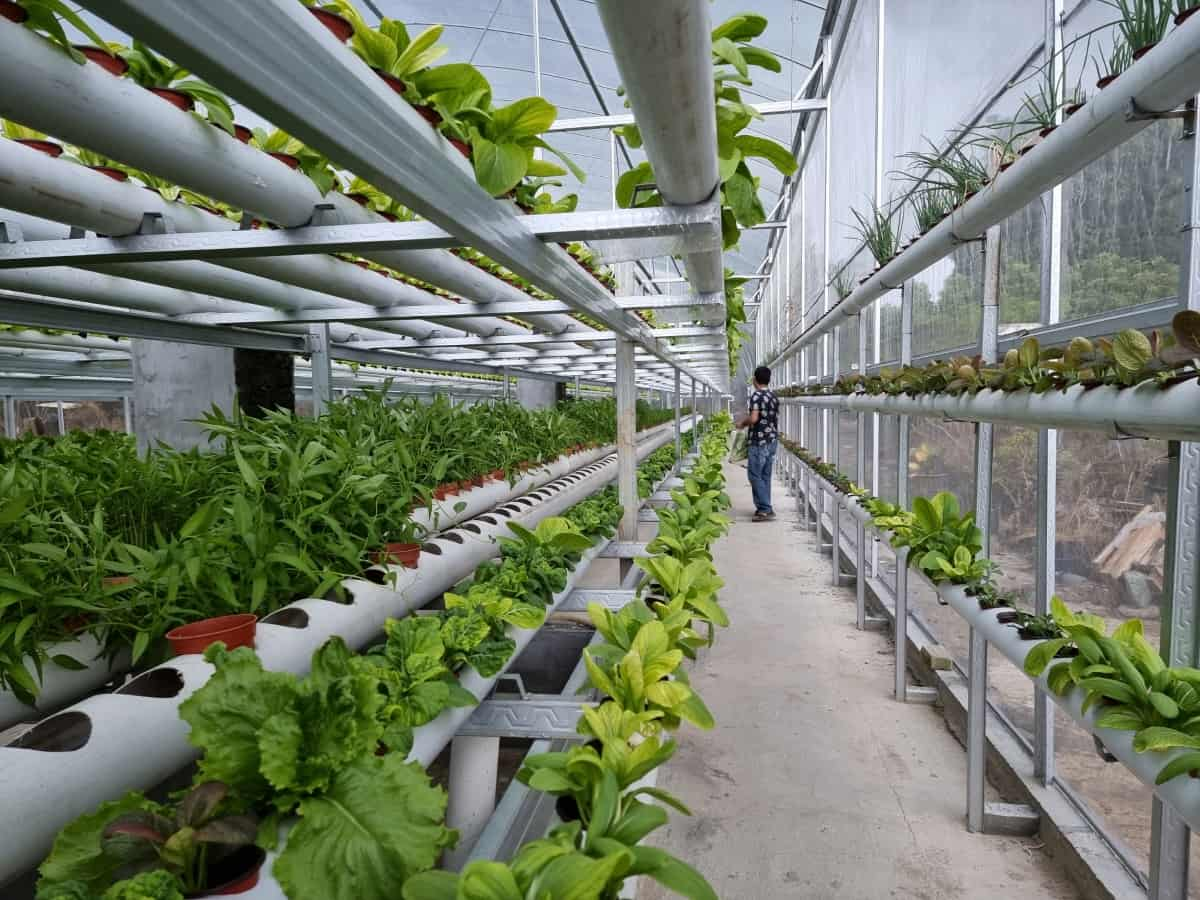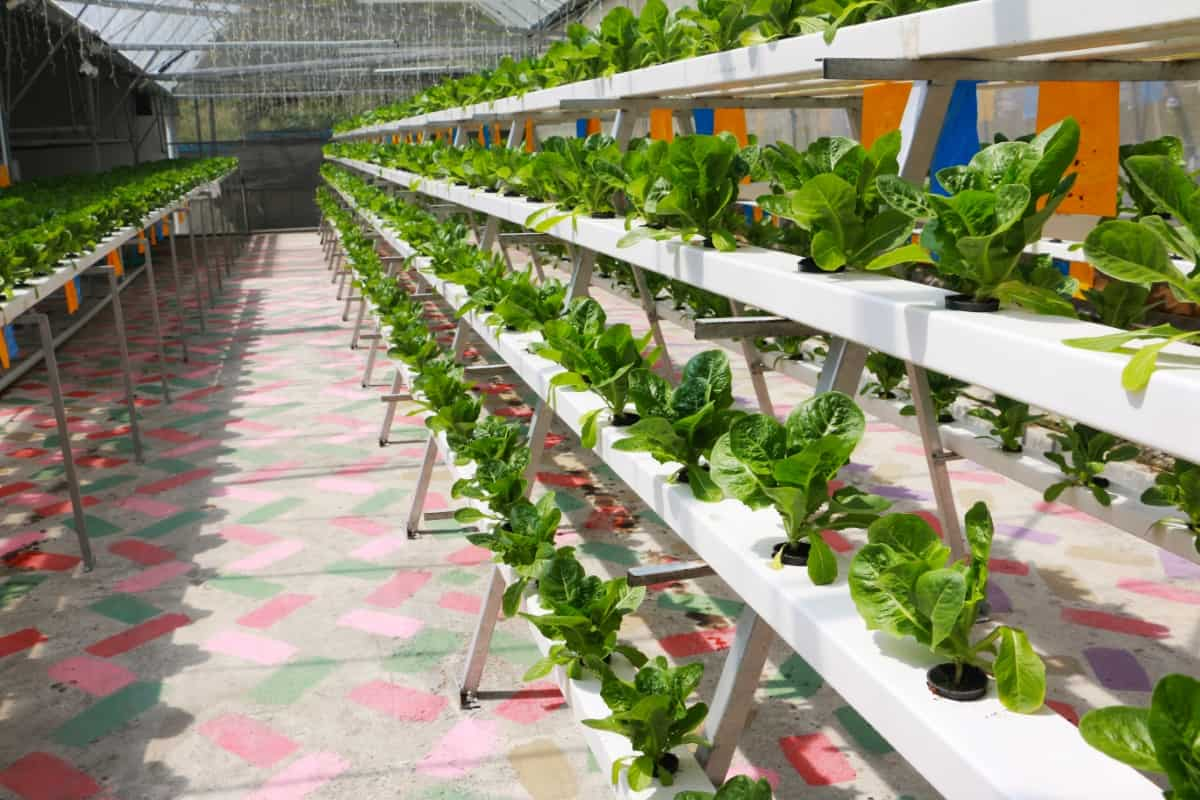Hydroponics is a plant-growing method without soil. Instead, the plants are grown in nutrient-rich water solutions and other mediums. Hydroponic systems can be built in various ways, and many different components are necessary for a successful system. This article covers the essential components of a hydroponic system and provides tips for building a successful system.

Mastering Hydroponic Components
Essential Hydroponic Setup Components for Indoor Gardening
- Grow tray: The grow tray is the container that holds the plants and the nutrient-rich water.
- Reservoir: The reservoir is the container that holds the nutrient-rich water.
- Pump: A pump is needed to circulate the nutrient-rich water to the grow tray from the reservoir.
- Air Pump and airstones: An air pump and airstones are necessary to oxygenate the nutrient-rich water and provide aeration for the roots.
- Grow medium: The growing medium is the material that supports the roots of the plants in the grow tray.
- Nutrients: These are vital for plant growth and are added to the reservoir water. Various types of nutrients are available, such as macronutrients and micronutrients.
- pH testing kit: The pH level of the nutrient-rich water is crucial for healthy plant growth.
Key Components of a Successful Hydroponic Nutrient Solution
A successful hydroponic nutrient solution is key to the growth and health of plants in a hydroponic system. The key components of a successful hydroponic nutrient solution are as follows:
- Macro and micro nutrients: A complete nutrient solution should include all the essential macro and micronutrients plants need to grow, like nitrogen, phosphorus, potassium, calcium, magnesium, iron, and zinc.
- pH balance: The pH of the nutrient solution is important to ensure the plants can absorb all the nutrients they need.
- Electrical conductivity: The nutrient solution’s electrical conductivity (aEC) measures the concentration of dissolved salts.
- Water quality: The water quality used to make the nutrient solution is also important.
- Temperature: The temperature of the nutrient solution should be kept within a certain range to ensure that the plants can absorb the nutrients they need.
Important Hydroponic Lighting Components for Plant Growth
- LED grow lights: The most popular lighting components used in hydroponic gardening are LED grow lights. They are energy-efficient, long-lasting, and provide a full spectrum of light that plants need for photosynthesis.
- High-Intensity Discharge (HID) Lights: HID lights are another popular hydroponic lighting option. They are more powerful than LED grow lights and can cover a larger area.
- Fluorescent lights: Fluorescent lights are a more affordable hydroponic lighting option. They are ideal for small grow spaces and are energy-efficient.
- Light movers: Light movers are hydroponic lighting components that move grow lights back and forth over plants. This ensures that all plants receive equal amounts of light, which promotes even growth and prevents any plants from being shaded.
Choosing the Right Hydroponic Grow Media Components
- Rockwool: Rockwool is a popular grow media component because it is easy to use and provides good support for plants. It is made from volcanic rock heated to high temperatures and spun into fibers. It can be expensive and may need to be pH balanced before use.
- Expanded clay pellets: They are lightweight and provide good drainage for plants. They are also reusable, which makes them an eco-friendly choice. However, they can be expensive and must be rinsed before use.
- Coconut coir: It is an excellent choice for hydroponic gardening because it is lightweight, easy to use, and holds much water.
In case you missed it: 7 Causes of Dying Plants in Hydroponics and How to Fix Them?drop

- Perlite: It provides good drainage and aeration for plants, which makes it an excellent choice for hydroponic gardening. However, it does not hold water well and may require additional irrigation to maintain moisture levels.
- Vermiculite: Vermiculite is a natural grow media component made from a mica type. It holds water well and provides good support for plants. However, it can be expensive and may require additional nutrients to be added to the growing solution.
Essential Hydroponic System Components for pH Regulation
- pH Meter: It is important to regularly test the pH level to ensure it is within the optimal range for the plants being grown.
- pH adjuster: Once the pH level has been measured, pH adjusters bring the pH level to the desired range.
- Acid Buffer: An acid buffer is used to stabilize the pH level in a hydroponic system.
- Alkaline buffer: An alka2line buffer raises the pH level in a hydroponic system. It is important to use an alkaline buffer specifically designed for hydroponic systems.
- Reverse Osmosis System: A reverse osmosis system removes impurities from the water used in a hydroponic system.
Hydroponic Irrigation System Components for Optimal Water Management
Hydroponic irrigation systems must carefully balance water and nutrients to ensure optimal plant growth. Several key components are necessary for a hydroponic irrigation system to manage water efficiently.
- To prevent water contamination, the reservoir should be made of food-grade material, such as plastic or stainless steel.
- The water pump should be sized appropriately for the system’s size and capable of providing enough water flow to all plants.
- A series of tubing and fittings are needed to ensure that the water and nutrients are evenly distributed throughout the system.
- In addition to the tubing and fittings, drip emitters are needed to deliver water directly to the plants.
- A timer is needed to control the frequency and duration of the watering cycles.
Key Components of a Hydroponic Air Circulation System
- Fans: These are used to move air throughout the growing area, ensuring fresh air is constantly supplied to the plants.
- Filters: Filters remove impurities from the air, ensuring the plants receive clean air. The most common filters used in hydroponic air circulation systems are carbon filters and HEPA filters.
- Ducting: Ducting connects the fans and filters to the growing area. It ensures that air is moved efficiently throughout the growing area and filtered before reaching the plants.
- Controllers: These are essential for maintaining the optimal environment for plant growth, as they can adjust the growing area’s temperature, humidity, and CO2 levels.
- Mufflers: They are particularly useful if the hydroponic setup is located in a residential area, as they can help to reduce noise levels.
Hydroponic System Components for Nutrient Delivery and Monitoring
- Reservoir: It should be made of a food-grade material that doesn’t react with the nutrient solution. The reservoir size depends on the size of the hydroponic system.
- Nutrient solution: The nutrient solution should be pH balanced and should contain all the necessary elements that the plants need to grow
- Delivery system: Several delivery systems include drip systems, flood and drain systems, and aeroponic systems.
- Pumps: They can be submersible or external and should be sized appropriately for the hydroponic system.
- pH meter: The pH meter measures the pH level of the nutrient solution. The pH level should be between 5.5 and 6.5 for optimal plant growth.
- Conductivity meter: It measures the nutrient solution’s electrical conductivity.
- Thermometer: It is used to measure the temperature of the nutrient solution.
Pest and Disease Control in Hydroponic Systems
- For pest and disease control in hydroponics is implementing a strict sanitation protocol. This involves regularly cleaning and disinfecting all equipment used in the hydroponic system, including the growing containers, pumps, and tubing. This prevents the spread of pests and diseases between plants.
- Use biological controls. This involves introducing beneficial insects or microorganisms that prey on or outcompete harmful pests or diseases. For example, ladybugs can be introduced to control aphids, while nematodes can be used to control root-knot nematodes.
- Use of physical barriers to control pests from entering the hydroponic system. This can include using mesh screens or netting to cover the growing containers or entry points. The use of sticky traps can also be effective in trapping flying insects.
- Use of organic pesticides. These chemicals are derived from natural sources and are less environmentally harmful than synthetic pesticides. Examples of organic pesticides include neem oil, pyrethrin, and spinosad.
In case you missed it: Hydroponic Beans Farming in a Greenhouse: Key Rules to Start from Scratch

Conclusion
In conclusion, a successful hydroponic system requires careful planning and attention to detail. By understanding the essential components of a hydroponic system and following the tips in this guide, you can build a successful system and grow healthy, thriving plants.
- Feed Your Flock for Less: Top 10 Tips to Save on Chicken Feed
- Ultimate Guide to Ossabaw Island Hog: Breeding, Raising, Diet, and Care
- Hatching Answers: The Top 10 Reasons Your Chickens Aren’t Laying Eggs
- Eggs and Economics: Breaking Down the Cost of Raising Backyard Chickens
- Defend Your Greens: Proven Methods to Keep Iguanas Out of Your Garden
- Ultimate Guide to Cinnamon Queen Chicken: A Comprehensive Guide for Beginners
- Ultimate Guide to California Tan Chicken: Breeding, Raising, Diet, Egg-Production and Care
- Ultimate Guide to Marsh Daisy Chicken: Breeding, Raising, Diet, and Care
- 10 Types of Chicken Farming Businesses You Can Start for Profits